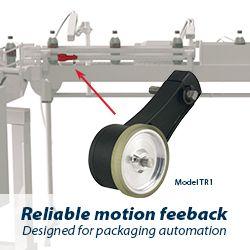Servos, Motors, and Actuators Driving Robotic Components Market Towards a Healthy $2.4 Billion in 2016, According to ABI Research
Servos, motors, and actuators will show significantly higher growth rates than the overall robot market, due to the increasing complexity of robots. ABI Research forecasts robotic component revenues to exceed $2.36 billion in 2016, in a total robotics market of some $22 billion.
Servos, motors, and actuators will show significantly higher growth rates than the overall robot market, due to the increasing complexity of robots. ABI Research forecasts robotic component revenues to exceed $2.36 billion in 2016, in a total robotics market of some $22 billion.
In addition, components such as wheels, microcontrollers, and battery units, will show high unit shipping volumes, due to their use on multiple types of robots, particularly in the personal robot segment.
According to research director Philip Solis, "Today, personal robots are leading the market with 97% of unit shipments, although military, industrial and medical robots, due to their much higher ASPs, deliver almost twelve times as much overall revenue. The greater complexity of new models, and growing demand for that complexity, require more expensive parts and materials."
On the downside, Solis notes, "Continuing global economic instability (as well as man-made or natural disasters such as the recent earthquake in Japan) could impact demand for robots and their components, while rising commodity costs can mean more expensive components."
ABI Research's new "Robotic Components" study (http://www.abiresearch.com/research/1007700) examines the market for robotic components for the period 2011-2016, covering global markets segmented by region. Forecasts are segmented for individual component types, for shipments, ASPs and revenues. The activities of key industry participants are also discussed.
This report is part of ABI Research's Robotics and Automation Research Cluster (http://www.abiresearch.com/products/cluster/Robotics_and_Automation_Research_Cluster)
Featured Product

Model TR1 Tru-Trac
The Model TR1 Tru-Trac® linear measurement solution is a versatile option for tracking velocity, position, or distance over a wide variety of surfaces. An integrated encoder, measuring wheel, and spring-loaded torsion arm in one, compact unit, the Model TR1 is easy to install. The spring-loaded torsion arm offers adjustable torsion load, allowing the Model TR1 to be mounted in almost any orientation - even upside-down. The threaded shaft on the pivot axis is field reversible, providing mounting access from either side. With operating speeds up to 3000 feet per minute, a wide variety of configuration options - including multiple wheel material options - and a housing made from a durable, conductive composite material that minimizes static buildup, the Model TR1 Tru-Trac® is the ideal solution for countless applications.
